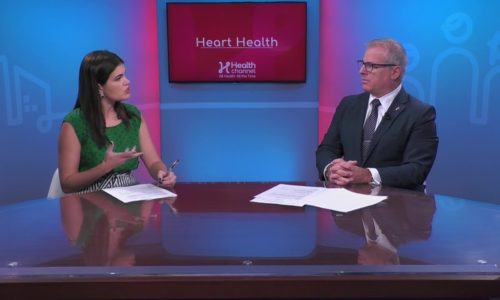At what point is my blood pressure too high? |

What is blood pressure? Blood pressure is the force of blood against the walls of arteries as it leaves the heart. Sufficient pressure is necessary within the circulatory system to move blood throughout the body. If blood pressure gets too high, however, a number of adverse health effects can develop.
Why are two numbers given in a blood pressure reading? A blood pressure reading consists of two readings, the systolic blood pressure (the “top” number) and the diastolic blood pressure (the “bottom” number). The systolic reading is the pressure in the arteries when the heart beats. Diastolic pressure is the pressure reading in the arteries as the heart relaxes between beats.
What is considered to be normal blood pressure? A reading of 120/80 millimeters of mercury (mmHg) is generally considered to be “normal” blood pressure. Hypotension (when blood pressure is too low) occurs when the pressure in the arteries is insufficient to adequately supply the heart, brain, and other parts of the body. A systolic blood pressure reading of 90 mmHg or less or a diastolic reading of 60 mmHg is generally considered to be in the hypotensive range.
What is hypertension and why is it dangerous? The medical term for sustained high blood pressure is hypertension. High blood pressure increases the work load on the heart and contributes to atherosclerosis (hardening of the arteries). Hypertension is a major risk factor for the development of heart disease and stroke, respectively the first- and fifth-leading causes of death among Americans today. It is especially troublesome because it often has no warning signs or symptoms. High blood pressure also can lead to other conditions, such as congestive heart failure, kidney disease, and blindness.
What level of elevated blood pressure signifies that someone has hypertension? As defined by the American Heart Association, hypertension is present when the systolic reading is in the range of 140-159 or the diastolic reading is 90-99. Blood pressure in this range is considered to be Stage 1 hypertension, the lowest category of high blood pressure. The AHA classification goes from Stage 1 to the highest category, Hypertensive Crisis, in which blood pressure is higher than 180 over 110.
What if only one of the readings is high? If the systolic or diastolic blood pressure is elevated alone, it is called “isolated hypertension”. Isolated systolic hypertension, an elevation in systolic but not diastolic pressure, is the most prevalent type of hypertension in those aged 50 or over. A great deal of evidence has accumulated over the last few years to warrant greater attention to the importance of isolated systolic hypertension, since treatment will significantly decrease deaths from heart-related events and stroke.
What about readings between “normal” and those that are considered hypertensive? The most recent classification of blood pressure includes a new category called “prehypertension”. This category includes people whose blood pressure is in the range of 120-139 mmHg systolic and/or 80-89 mmHg diastolic. Prehypertension is not considered to be a disease. Instead, it designates those individuals who are at high risk of developing hypertension. Anyone with prehypertension should institute intensive lifestyle measures in an attempt to avoid developing hypertension. These measures include getting regular exercise, eating a diet low in sodium, limiting alcohol intake, reducing to an ideal weight, and stopping smoking.
Does having high blood pressure mean that treatment with a medication is necessary? Unless the blood pressure is extremely high, adopting healthy lifestyle habits, rather than medications, is the first step in controlling high blood pressure. If lifestyle changes alone are not effective in bringing the blood pressure down to 140/90 or lower, it may be necessary to add blood pressure medications. For people with chronic kidney disease, diabetes, or coronary artery disease the target blood pressure should be 130/80 or lower.
Article Sources:
American Heart Association: Understanding Blood Pressure Readings
High Blood Pressure: National Heart, Lung, and Blood Institute
Content reviewed by our Medical Director on 5-4-2016
If you have any more questions just Ask Hanna, our health advisors are here to help.
Image: ©Shutterstock / Shidlovski








